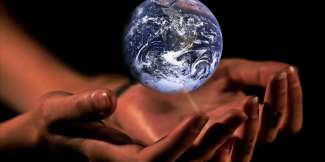All News

Phys.org / Chinchorro mummification may have originated as a form of art therapy, study suggests
In a recent study published in the Cambridge Archaeological Journal, Dr. Bernardo Arriaza argues that the practice of artificial mummification among the Chinchorro people may have evolved as a response to high infant mortality ...

Phys.org / 16,000 fossil footprints in central Bolivia reveal dinosaur behavior
Legend once had it that the huge, three-toed footprints scattered across the central highlands of Bolivia came from supernaturally strong monsters—capable of sinking their claws even into solid stone.

Phys.org / How did Bronze Age plague spread? A sheep might solve the mystery
In the Middle Ages, a plague killed a third of Europe's population. Fleas carried the plague bacterium, Yersinia pestis, transmitting the Black Death from infected rats to millions of people.

Medical Xpress / Study finds a better way to screen for breast cancer
A pioneering study has found that an individualized approach to breast cancer screening that assesses patients' risk, rather than annual mammograms, can lower the chance of more advanced cancers, while still safely match ...

Medical Xpress / Why the human brain matures slower than its primate relatives
The human brain is a fascinating and complex organ that supports numerous sophisticated behaviors and abilities that are observed in no other animal species. For centuries, scientists have been trying to understand what is ...

Phys.org / Astronomers explore the double nucleus of galaxy NGC 4486B
Using the James Webb Space Telescope (JWST), an international team of astronomers has observed an elliptical galaxy known as NGC 4486B. Results of the observational campaign, published Dec. 16 on the arXiv preprint server, ...

Phys.org / Gemini and Blanco telescopes unlock clues to origin of longest gamma-ray burst ever observed
Gamma-ray bursts (GRBs) are among the most powerful explosions in the universe, second only to the Big Bang. The majority of these bursts are observed to flash and fade within a few seconds to minutes. But on 2 July 2025, ...

Phys.org / Flaring black hole whips up ultra-fast winds
Leading X-ray space telescopes XMM-Newton and XRISM have spotted a never-seen-before blast from a supermassive black hole. In a matter of hours, the gravitational monster whipped up powerful winds, flinging material out into ...

Medical Xpress / Social media, not gaming, tied to rising attention problems in teens, new study finds
The digital revolution has become a vast, unplanned experiment—and children are its most exposed participants. As ADHD diagnoses rise around the world, a key question has emerged: could the growing use of digital devices ...

Tech Xplore / Researchers create world's smallest programmable, autonomous robots
Researchers at the University of Pennsylvania and University of Michigan have created the world's smallest fully programmable, autonomous robots: microscopic swimming machines that can independently sense and respond to their ...

Phys.org / Supernova from the dawn of the universe captured by James Webb Space Telescope
An international team of astronomers has achieved a first in probing the early universe, using the James Webb Space Telescope (JWST), detecting a supernova—the explosive death of a massive star—at an unprecedented cosmic ...

Phys.org / We analyzed 73,000 articles and found the UK media is divorcing 'climate change' from net zero
In October 2024, Conservative leader Kemi Badenoch declared herself a "net zero skeptic," but "not a climate skeptic." Most recently she doubled down, announcing plans to scrap the 2030 ban on new petrol cars in a 900-word ...